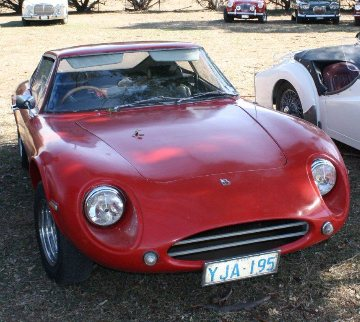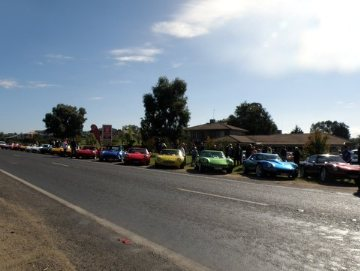
I first became interested in Bolwells around about 1970. I went to the factory in Melbourne to have a look and collected price lists and advice. I was working in Lithgow NSW at the time so I also talked to the Sydney agent about the work involved in putting the car together. Strangely, he talked me out of it! He pointed out that even building up a simple version using components and sub assemblies available from Bolwell, it would take two or three months of constant work to get a complete car on the road. So I traded in the Cooper S and bought a MGB Mk11 instead.
My interest in the Mk7 was reactivated a few years later when a friend in Melbourne bought one that had already been completed. It was great to drive (with the exception of the automatic transmission). From then on I kept a watch out for a used Mk 7. In March 1976 a Mk7 body and steel backbone chassis was advertised in the Canberra Times. A quick trip to Ainslie, passing of some money and it was mine!
A previous owner had started building the car with a MGA front end and back axle. These do not fit well so they were removed and I was able to start afresh. I decided on a Holden HR disc brake front end and back axle. A 3300cc engine from a wrecked Torana GTR provided the power, coupled up to Opel gearbox from an early Holden Monaro. The Torana dashboard and wiring loom provided a good starting point for modification to suit the Mk7. Many of the parts needed were sourced from the Caesar wrecking yard in Queanbeyan – he took an interest in the project and helped find difficult parts. Holden parts dominated (normal for a MK7) but Datsun, Ford and Leyland all made an appearance. Although most parts could be adapted or modified, there were some that had to be fabricated from scratch eg the pedal unit. Finding a heater was a bit of a challenge. There was not much space available, but by one of those happy coincidences the heat exchanger left over from a Datsun 2000 Sports previously bought for parts just slotted in.
Interior trim was a new challenge. I was able to buy a pair of high backed fiberglass seat shells from Bolwell and did the upholstery work. After that the vinyl dashboard covering and carpeting seemed easy.
In parallel with the mechanical work the fiberglass body and doors needed plenty of attention. When I bought the car there must have been a million pin holes in the surface which were progressively reduced to about 100 prior to painting. To have any chance of lasting the body needed strengthening in some areas – in particular the front guards, wheel arches, roof and rear window all needed aluminium “U” channel to be bonded in. I sprayed it with an electric spraygun but was never happy with the pale blue (Commonwealth Car fleet colour).
After two years of work the car was ready for a trip to the Dickson Motor Registry. Being a special, an appointment was needed. They had not seen a Bolwell before, and spent 90 minutes picking over the car! The next few months were spent working down the helpful list of corrections such as lowering the front suspension, realigning the steering mount brackets etc. The second visit to Dickson was successful and the car has been kept in registration (or registerable) ever since.
In the early 1980s I went along to a panel beating and spray painting courses at the CIT. In the final year I resprayed the car in its current Holden Marenello red colour. Plans for the future include fitting power windows, an air conditioner from a Honda Civic, a 5 speed gearbox from a Celica, changing the diff ratio, and some reupholstered seats. The question is, when ?
Some 350 Mk7s were produced and many are still on the road. The Mk7 was the largest volume car Bolwell produced, with the factory built Mk8 or Nagari (used Ford V8 and components) being the best known. A total of around 700 vehicles, including all models, had been produced by the time the high cost of complying with Australian Design Rules led to the Bolwell car division shutting down. They continued to make fiberglass products and a few years ago tried car making again but it appeared there was insufficient market interest.

There are active Bolwell car clubs in most States, and they have an annual get together each Easter. The photo shows some of the Bolwells which went to Tumut in 2014. Many of them have had major restorations/modifications – they all looked really good.
Graham Waite